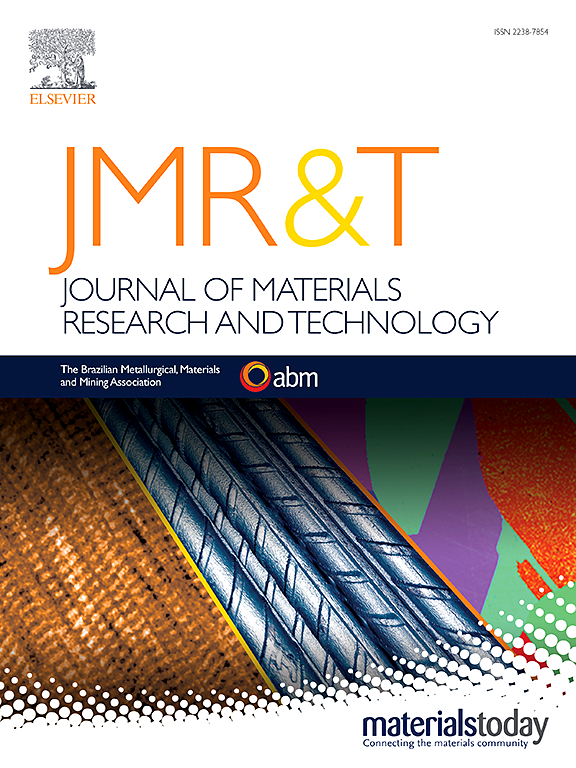Influence of hydrostatic pressure on the passive film of titanium alloy
IF 6.2
2区 材料科学
Q1 MATERIALS SCIENCE, MULTIDISCIPLINARY
Journal of Materials Research and Technology-Jmr&t
Pub Date : 2025-06-09
DOI:10.1016/j.jmrt.2025.06.065
引用次数: 0
Abstract
The effect of hydrostatic pressure on the corrosion behavior and failure mechanism of Ti–6Al–4V in simulated deep-sea environments has been investigated through microstructure analysis and in-situ electrochemical measurements. Hydrostatic pressure does not change the nucleation mechanism of passive film of Ti–6Al–4V. Charge transfer resistance (Rct) decreases by 53.0 % and 69.9 % at 10 MPa and 30 MPa respectively, compared to 0.1 MPa, suggesting that the corrosion resistance of passive film degrades with increasing hydrostatic pressure. Oxygen vacancies act as the primary donors within the passive film of Ti–6Al–4V. At the etching depth of 10 nm, the TiO2 content in the passive film decreases from 47.75 % (0.1 MPa) to 33.23 % (30 MPa). The average valence state of Ti in the inner layer of the passive film decreases with the increase in hydrostatic pressure, indicating that the stability of the passive film decreases.
静水压力对钛合金钝化膜的影响
通过微观组织分析和现场电化学测量,研究了静水压力对模拟深海环境中Ti-6Al-4V腐蚀行为和破坏机制的影响。静水压力对Ti-6Al-4V钝化膜的成核机制没有影响。与0.1 MPa相比,在10 MPa和30 MPa下,电荷传递电阻(Rct)分别降低了53.0%和69.9%,表明钝化膜的耐蚀性随着静水压力的增加而降低。氧空位是Ti-6Al-4V钝化膜内的主要供体。当刻蚀深度为10 nm时,钝化膜中的TiO2含量从47.75% (0.1 MPa)下降到33.23% (30 MPa)。随着静水压力的增大,钝化膜内层Ti的平均价态降低,表明钝化膜的稳定性降低。
本文章由计算机程序翻译,如有差异,请以英文原文为准。
求助全文
约1分钟内获得全文
求助全文
来源期刊

Journal of Materials Research and Technology-Jmr&t
Materials Science-Metals and Alloys
CiteScore
8.80
自引率
9.40%
发文量
1877
审稿时长
35 days
期刊介绍:
The Journal of Materials Research and Technology is a publication of ABM - Brazilian Metallurgical, Materials and Mining Association - and publishes four issues per year also with a free version online (www.jmrt.com.br). The journal provides an international medium for the publication of theoretical and experimental studies related to Metallurgy, Materials and Minerals research and technology. Appropriate submissions to the Journal of Materials Research and Technology should include scientific and/or engineering factors which affect processes and products in the Metallurgy, Materials and Mining areas.
 求助内容:
求助内容: 应助结果提醒方式:
应助结果提醒方式:


